
September
Joaquin
Segura
Joaquín Segura works in varied mediums such as sculpture, installation, photography, and video to reflect on themes of history, truth, and power. Highly influenced by his personal experience as a Mexican national, Segura seeks to spark deep reflection and critical thinking around significant historical events and pressing political issues, prompting viewers to question absolute truths and imagine different futures. To do so, Segura often utilizes materials that speak volumes. For instance, in Pyre (2016), he assembles 23 used car tires, nearly 1,700 pounds of wood, and 71 liters of gasoline—the precise amounts needed to disintegrate one human body in an open field—to create an installation that draws attention to the issue of mass disappearances in Latin America.
In Miami, the Mexico City-based artist spent his time focusing on a series of works derived from a rich archive of pamphlets he has built over many years. These political leaflets, which follow the influence of propagandist messages in various languages and countries, served as a point of departure to create pieces like The First Vietnamese Resistance (2022), a large oil on canvas painting meant to be shown alongside the eponymous book from which the painting was inspired.
Aside from the time and space he was afforded at Fountainhead, Segura was particularly impressed with the ability of Fountainhead’s team to envision the improbable albeit deep connections that can be formed between co-residents over just a few weeks.
“The warmth and genuine interest in us as artists makes Fountainhead unique. I think there’s a relationship—almost familial—between the artists and the [Fountainhead] team, and that was reflected in the relationship between us as residents and in our dynamics,” Segura said.
–Salomé Gómez-Upegui
Joaquin Segura’s residency was generously sponsored by Britta Jacobson and Philip Berlinski.
Ideological Clearance (Marx, Lenin, Mao) (2015); handwoven Haute-Lisse tapestries.

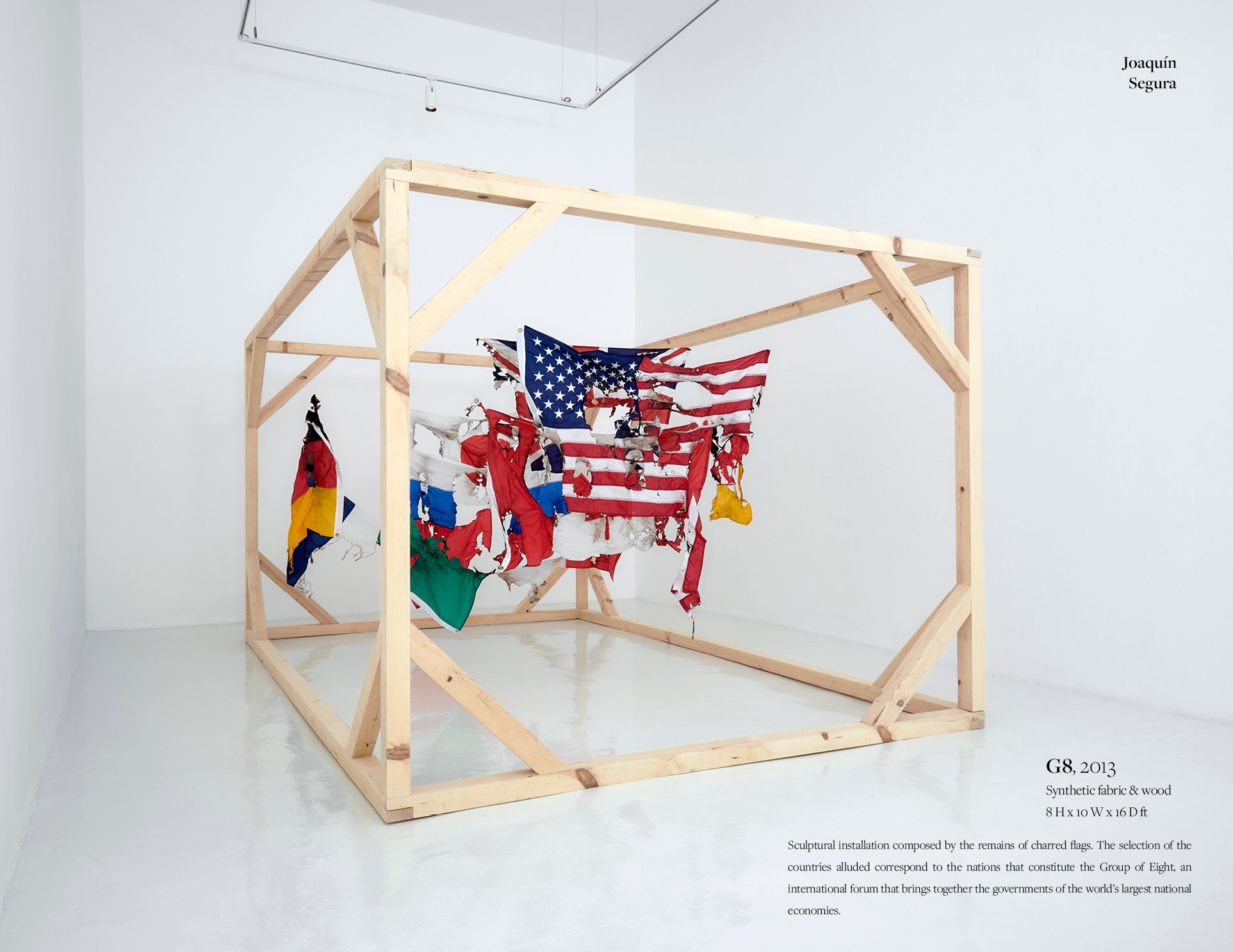

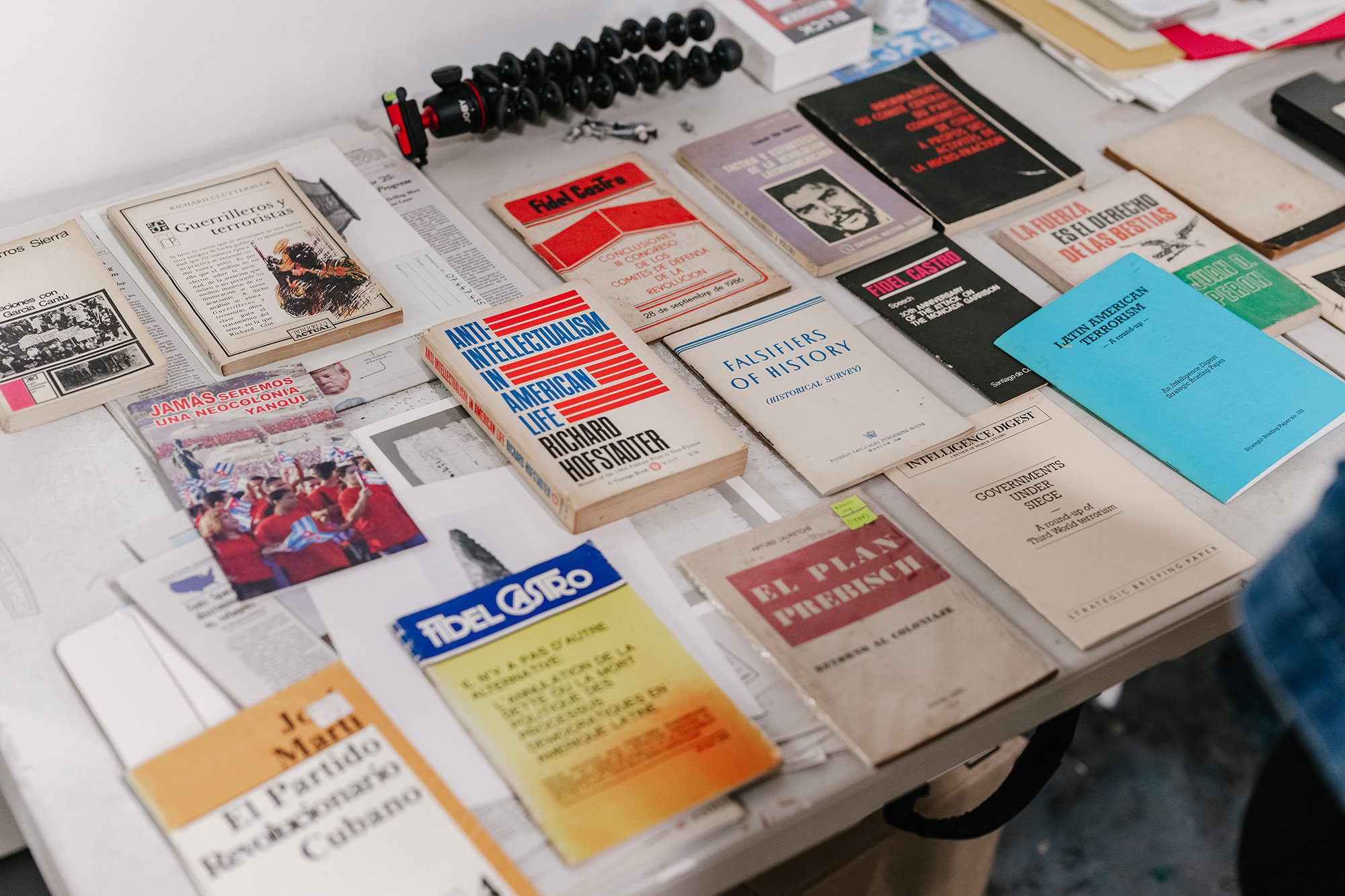

Clockwise from left: Joaquin Segura in his studio at Fountainhead, photographed by Pedro Wazzan. G8 (2013); synthetic fabric and wood. Defeatism & Contradictions (2021); oil on canvas, from the series Éminence Grise (2019 - ongoing). Segura collects pamphlets, books and other ephemera that illustrates geopolitical influences across languages and continents. Pyre (2016); wood, recovered tires, jerrycans & combustible fluid.
Rashawn
Griffin
Born in Los Angeles, and currently based in Kansas City, Griffin uses found materials to create paintings, sculptures, and installations that often bring forth poetic associations between objects and architecture, and invite viewers to reflect on their own past experiences.
In his practice, Griffin uses numerous unexpected materials that range from fabrics, bed sheets, and tassels to wood and cookies. From early on in his career, Griffin sought to incorporate personal belongings into his pieces in an effort to infuse his own energy into his oeuvre, bringing private elements into the public sphere. For instance, in Untitled (Boo Radley) (2006), the artist employed materials such as blankets, cotton, and pockets, to create a widely lauded sculpture featured in the 2008 Whitney Biennial. In some of his most recent works, like Decor 1 (2022), the artist assembled disparate elements, such as animal figurines, flowers, and a ballet shoe, to create a kaleidoscopic and perplexing composition.
Looking back on his experience at Fountainhead, Griffin recalls the month spent in Miami as a time of deep introspection. Although his pieces usually implicate his body and self in an abstract way, in line with this inward-looking spirit, Griffin used his time in Miami to depart from his typical works and develop a series of paintings that explicitly implicated his image. “I tend to mine my life conceptually as the genesis of my work, and I think this is part of what drives the making of the work,” he said.
The public and open nature of the residency, at times, proved to be challenging for Griffin, who found himself feeling more introverted than usual. And yet, he explained, “the [Fountainhead] team and my co-residents were really encouraging—they allowed me to make space for myself in terms of the work I needed to do and the healing I wanted to do.”
–Salomé Gómez-Upegui
Rashawn Griffin’s residency was generously sponsored by Britta Jacobson and Philip Berlinski.
At Fountainhead Residency in 2023, Rashawn Griffin created an installation with ceramic sculptures and recent works.

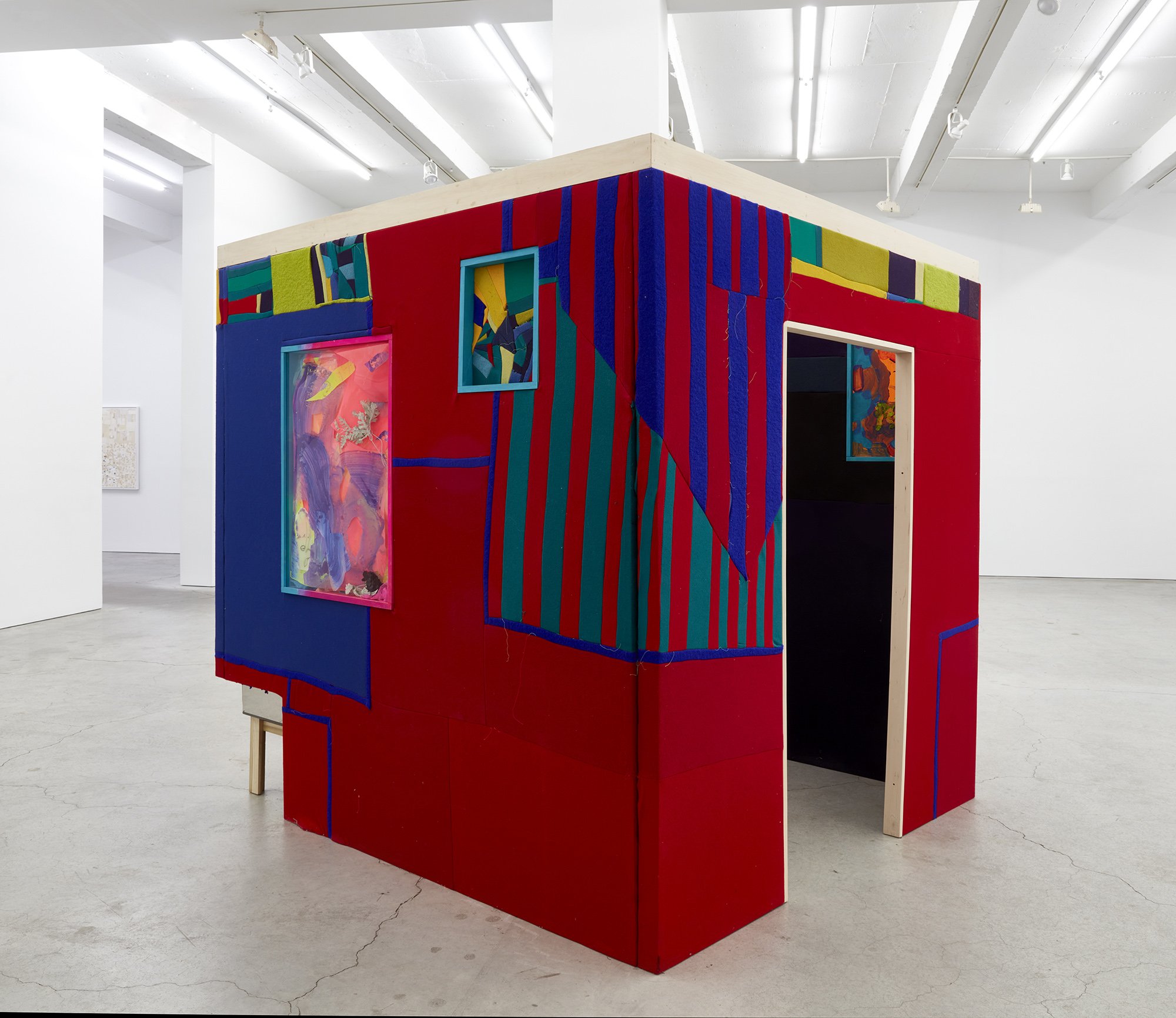



Clockwise from left: A portrait of Rashawn Griffin by Pedro Wazzan. The Changing Room (2022), Pool top felt, acrylic, oil, tempura, ceramic, wood, drawing, pair of shoes, glass, mixed media. This is How You Actually Look (2023), oil and acrylic on panel. Close up of pale hands manipulating clay (The Man Without Qualities) (2023), oil on canvas. Still Life (2023), epoxy clay, pigment, gouache, oil and acrylic, wood, canvas.
Ruth
Patir
Ruth Patir is a multimedia artist and filmmaker who breathes new life into historical and archeological notions and symbols of femininity. She adapts these references into digital mediums, creating images and documentaries that reflect on broader issues of gender paradigms, technology, and the aesthetics of power.
The day she arrived in Miami, Patir received a call that many artists spend their entire lives waiting for. She was selected to represent her home country of Israel in the 2024 Venice Biennial.
Over the following weeks, the Tel Aviv-based artist spent most mornings on calls preparing for this seminal moment in her career. However, a few months after leaving Miami, given the horrific war that erupted between Israel and Hamas, the future of her dream project is now uncertain.
“In Miami, I got—unfortunately—a very short-lived moment of basking in the sun of the nomination, of walking in the room and feeling like I was a force to be reckoned with,” Patir said. “Now there’s just genuine fear and confusion. I’m working as if I were participating, but I guess if it comes down to a genuine threat to our lives, I will probably bow out,” she added.
Patir’s work frequently mines her personal experience to address urgent collective matters. For example, to create her 3D film Marry, Fuck, Kill (2019), the artist animated ancient Israelite female figurines satirically placed in modern settings. In the piece, the symbolically charged figures engage in an amusing and intimate conversation about varying feminist perspectives, echoing real-life interactions between Ruth and her mother. In Petach Tikva (2020), Patir also used this technology to reflect on the subject of invasion. In this work, she animates sculptures of Canaanite fertility deities ironically placed within a waiting room at a fertility clinic, while the characters encounter the news of wild animals (also depicted as Canaanite sculptures) invading large cities.
–Salomé Gómez-Upegui
Ruth Patir’s residency was generously sponsored by Britta Jacobson and Philip Berlinski.
Love Letters to Ruth (2018); Installation photo from Hamidrasha Gallery in Tel Aviv Yafo.
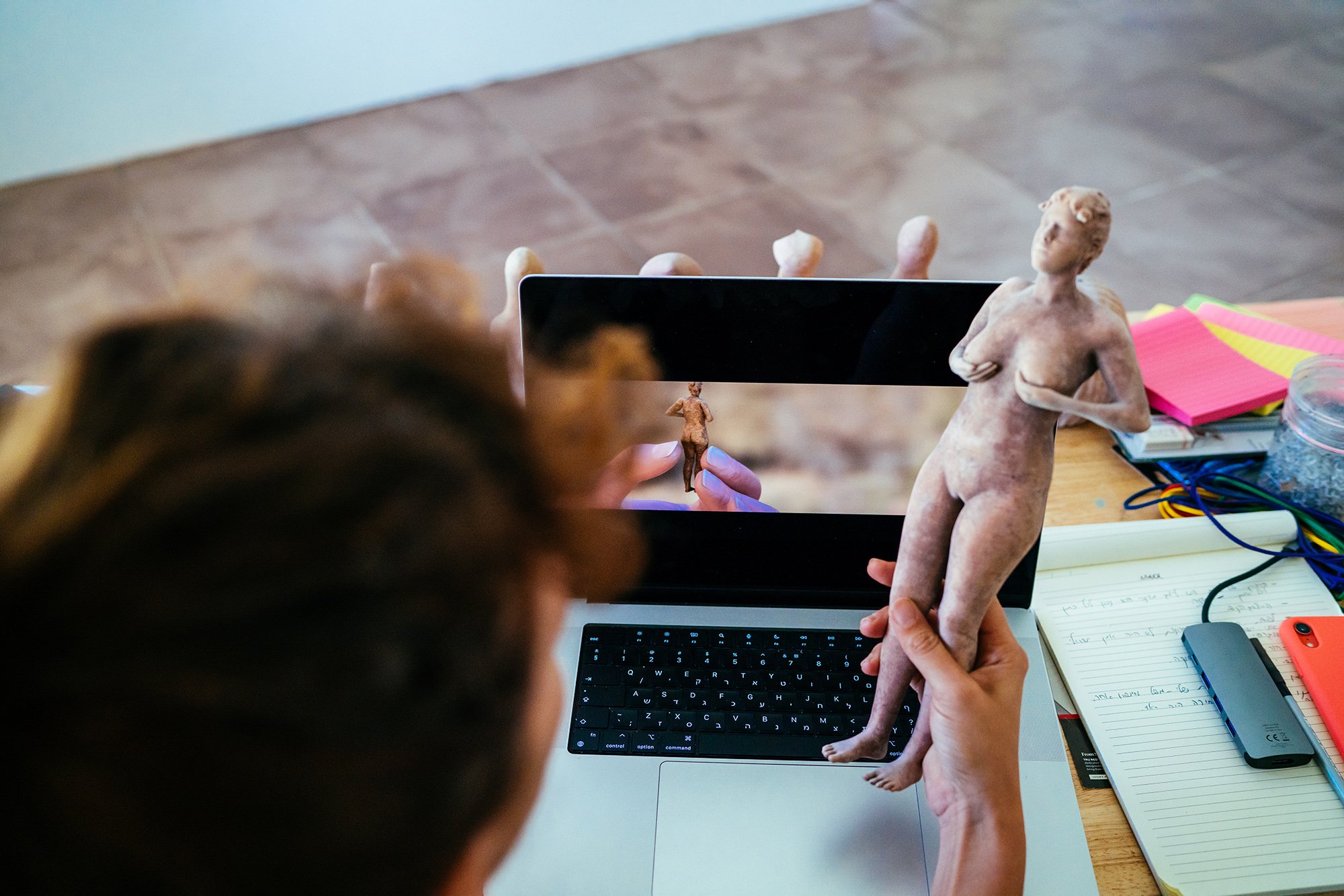
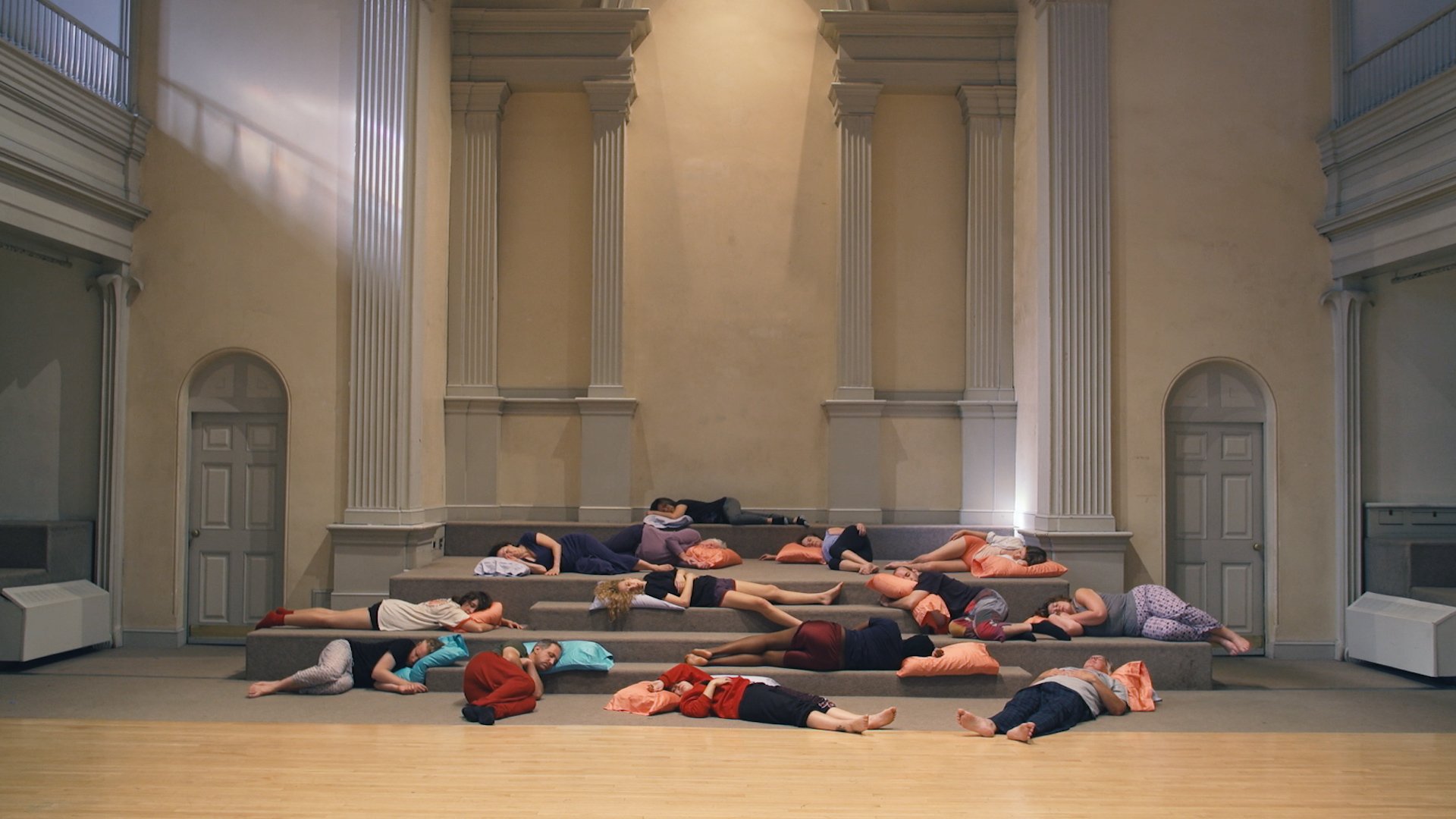
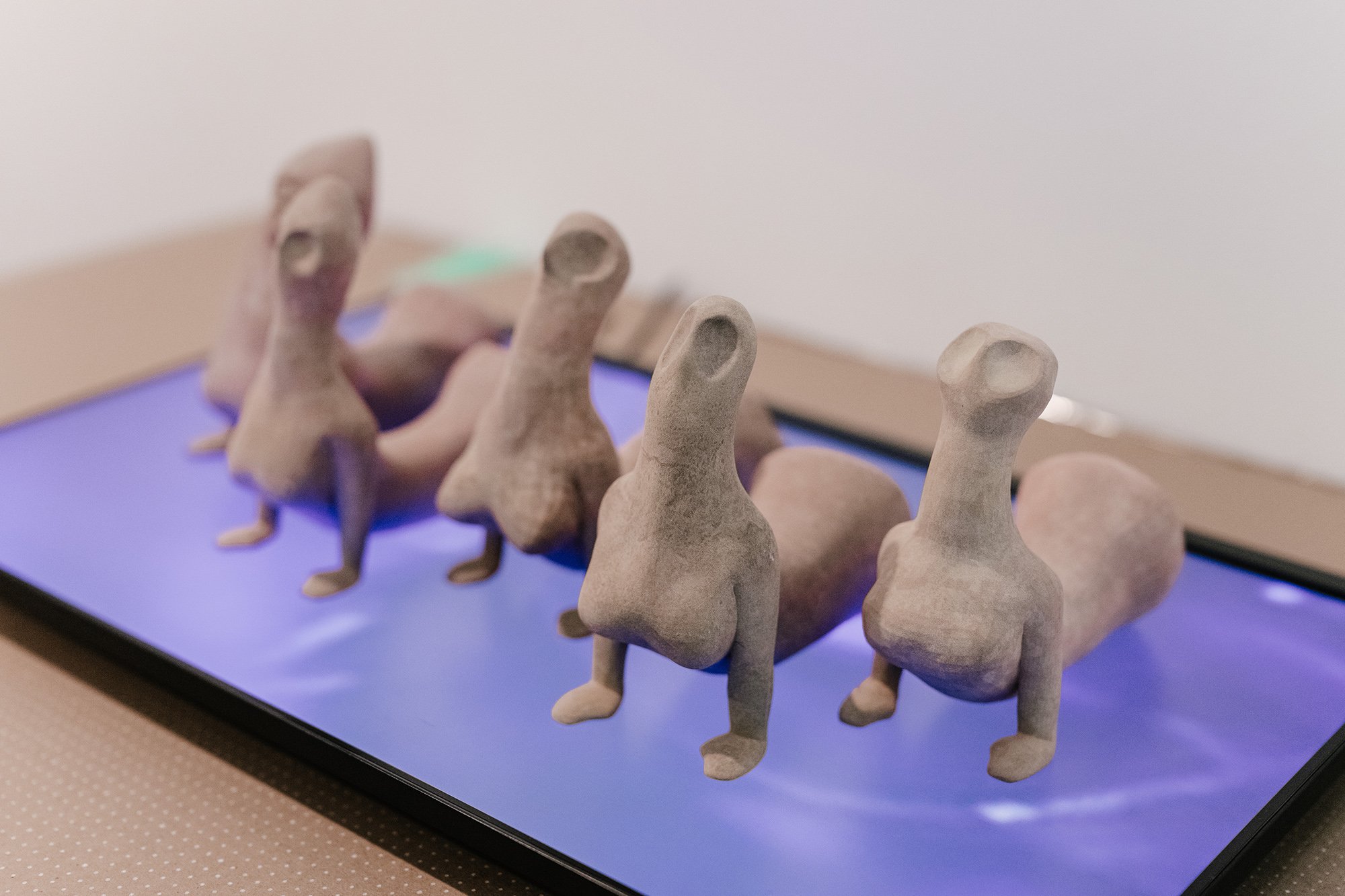
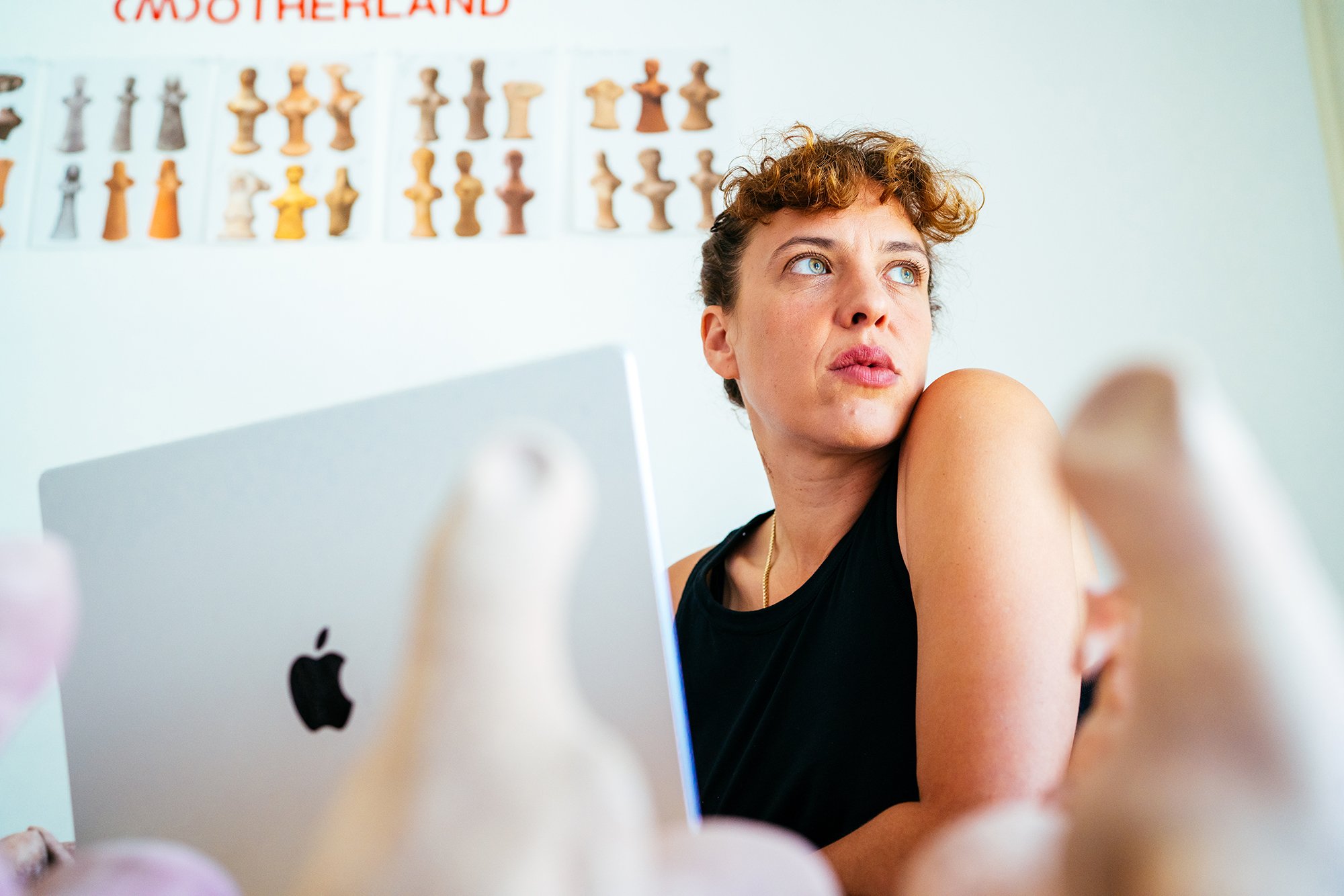

Clockwise from left: A view of Patir’s process as she completes a new video work. Sleepers (2017), 16 minutes, color, sound. Still from Marry Fuck Kill (2019), 3D documentary animation film, 14 minutes, color sound. A portrait of Patir photographed by Pedro Wazzan. Patir models miniature sculptures after ancient artifacts; she later creates 3D models of these sculptures to animate in her works.



